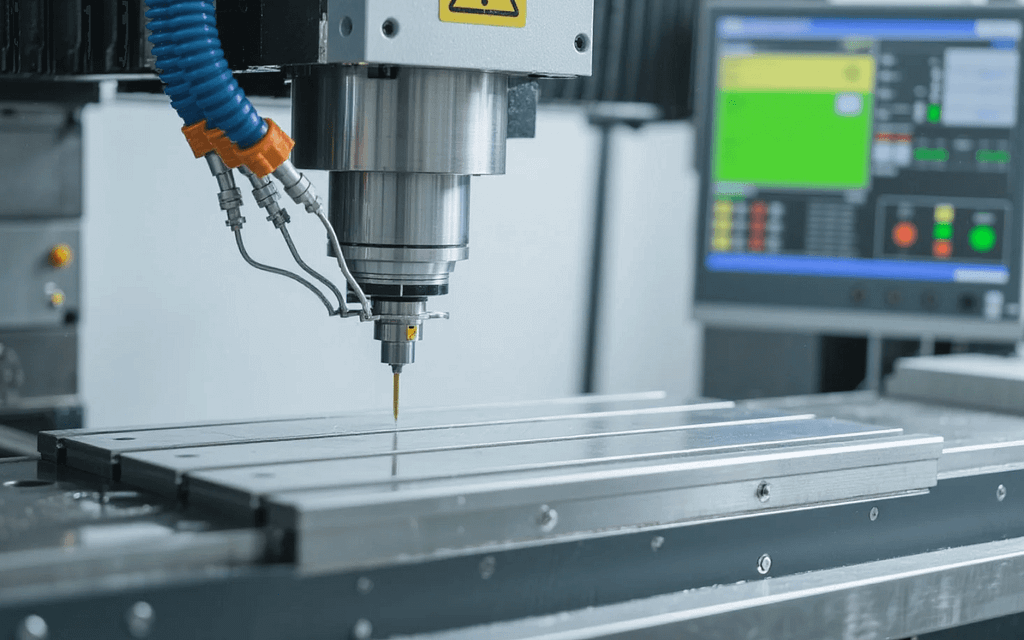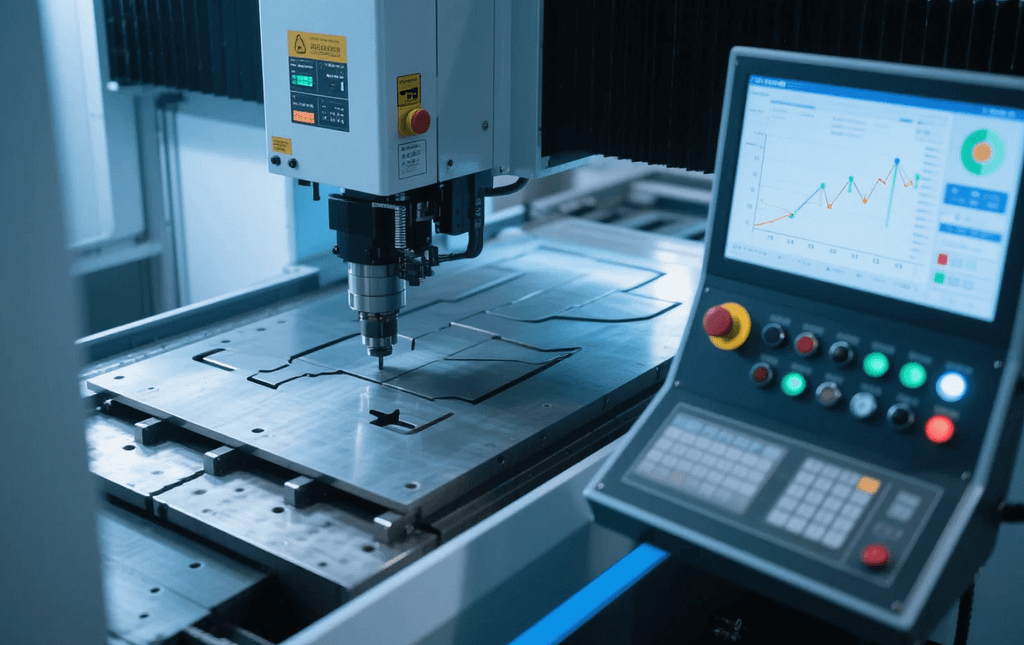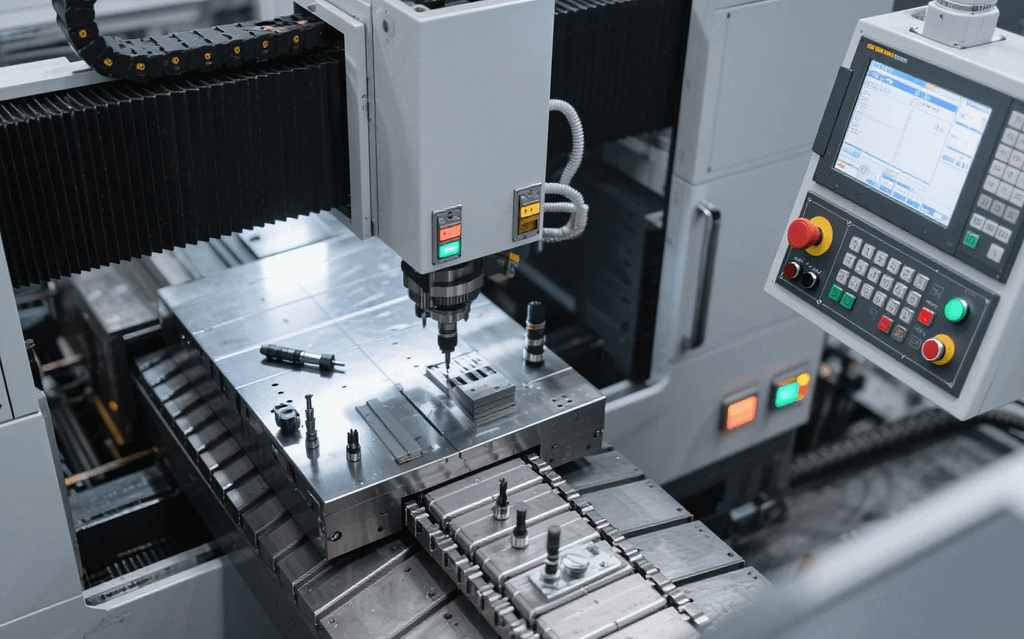In the relentless pursuit of perfection that defines the world of precision manufacturing, the acronym CNC—Computer Numerical Control—stands as the bedrock of modern industrial capability. Yet, the true power behind this revolutionary technology isn’t just the machine itself; it resides in the digital blueprints that guide every cut, turn, and bore: the process of how to program CNC. For manufacturers, engineers, and companies relying on high-fidelity components, understanding the depth and sophistication of program CNC is crucial. It’s the difference between a good component and a part that meets the uncompromising standards of aerospace, medical devices, and high-tech industries.
The transition from a raw block of material to a complex, tightly toleranced part hinges entirely on the precision and quality of the program CNC instruction set. This article delves into the indispensable role that skillful program CNC plays in not just operating machinery, but in elevating precision manufacturing to previously unattainable levels of accuracy, repeatability, and efficiency.
The Indispensable Core of Precision: Understanding How to Program CNC

At its heart, program CNC is the art and science of translating a 3D digital model (created in CAD software) into a sequential set of instructions (G-code and M-code) that a CNC machine can interpret and execute. This code dictates every minute detail of the machining process: tool paths, feed rates, spindle speeds, coolant application, and axis movements. A proficient program CNC strategy ensures the machine operates with surgical accuracy, minimizing material waste and maximizing throughput.
From CAD Model to G-Code: The Programming Workflow
The modern program CNC workflow is highly sophisticated, typically involving advanced CAM (Computer-Aided Manufacturing) software. Initially, the design is finalized in CAD. Subsequently, the CAM system takes this model and, based on the material, tooling available, and the required surface finish, automatically generates the necessary G-code. However, the programmer’s expertise is paramount; they must select the optimal machining strategies, define fixture placements, and simulate the entire process to prevent collisions and identify potential flaws before a single chip is cut.
Crucially, a highly skilled programmer can significantly impact the final part quality. They fine-tune the G-code to account for factors like tool deflection, thermal expansion of the material, and vibration, ensuring that the finished product adheres strictly to the tightest tolerances specified on the engineering drawing. This meticulous attention to detail is the foundation of world-class precision manufacturing.
Features and Characteristics that Define Elite Program CNC

In high-stakes industries, generic programming isn’t enough. Elite program CNC exhibits several characteristics that directly benefit the client demanding high-precision services.
Repeatability Through Code Optimization
One of the most significant advantages of program CNC is its capacity for perfect repeatability. Once a successful program is proven out, the CNC machine can execute it hundreds or thousands of times, producing virtually identical parts. Nevertheless, achieving this requires a highly optimized program that accounts for tool wear and thermal shifts. Furthermore, expert programmers integrate probing routines into the G-code. These routines allow the machine to inspect the part during the machining cycle and make real-time, minute adjustments to the tool position, guaranteeing that every feature falls within the required tolerance band.
Multi-Axis Programming for Complex Geometries
Modern precision manufacturing often requires parts with complex, organic, or contoured geometries that are impossible to create with conventional 3-axis machining. This is where advanced program CNC using 4-axis and 5-axis machines becomes essential. Programming these machines is exponentially more complex, as the code must orchestrate simultaneous, coordinated movement across multiple rotational and linear axes. Consequently, the programmer needs a deep understanding of kinematics and material science to generate tool paths that maintain optimal cutting angles and chip load, ensuring superior surface finish and structural integrity.
Integration of Digital Twins and Simulation
For complex, high-value components, running a program blindly is a substantial risk. Leading precision manufacturing firms rely on digital twins and advanced simulation software as a part of their program CNC process. Specifically, the programmer simulates the entire cutting operation in a virtual environment, checking for machine travel limits, potential tool-holder collisions, and cycle time efficiencies. This rigorous virtual validation significantly reduces setup time, prevents costly machine crashes, and ensures that when the physical part is run, the outcome is predictable and correct. This proactive approach is a hallmark of superior quality control.
Focusing on Value: Program CNC in Precision Manufacturing Applications

For companies seeking precision manufacturing services, the quality of the programming directly translates into the value they receive—speed, accuracy, and reliability.
Aerospace and Medical Device Reliability
In industries where failure is not an option, such as aerospace turbine blades or implantable medical devices, the integrity of the part is paramount. The program CNC for these components often incorporates extremely tight tolerances (sometimes measured in micrometers), demanding meticulous control over tool engagement and finish passes. In particular, the programmer may use high-speed machining techniques and specialized tool coatings, all coordinated by the G-code, to achieve mirror-like finishes that reduce stress concentration points and enhance component longevity. Therefore, the programmed process is essentially a quality assurance protocol baked into the manufacturing phase.
Efficiency and Cost Optimization
While high precision might suggest high cost, skillful program CNC is actually a key driver of manufacturing efficiency and cost reduction. By definition, an optimized program reduces the machine’s cycle time—the time it takes to produce one part—without compromising quality. This is achieved through efficient tool path sequencing, minimal non-cutting movements, and intelligent feed rate adjustments. Ultimately, this operational efficiency allows the manufacturer to offer more competitive pricing and faster turnaround times to the customer without sacrificing the critical precision required.
Ethical and Forward-Looking Values in Program CNC
The pursuit of excellence in program CNC is underpinned by a commitment to ethical and sustainable values. A strong emphasis is placed on minimizing waste. Namely, optimized programs reduce scrap rates by preventing errors and collisions, conserving expensive raw materials. Additionally, the focus on efficiency means machines run for shorter periods to complete the same work, reducing energy consumption. This integration of technological prowess with responsible manufacturing is a core value, ensuring that the pursuit of precision manufacturing benefits not just the customer, but the broader environment.
Conclusion: The Digital Brain of Manufacturing Excellence
The question, “How does program CNC elevate precision manufacturing?” is answered in the quantifiable improvements to accuracy, the flawless repeatability, and the economic efficiencies it delivers. For Captec Precision, the mastery of program CNC is not merely a technical requirement; it is the digital brain that ensures every component we produce meets the unyielding demands of global industry leaders. It is the commitment to this foundational technology that transforms a raw idea into a perfectly realized physical object.
자주 묻는 질문(FAQ)
Q1: What is the most common language used to program CNC machines?
A: The most common and fundamental language is G-code. G-code (Geometric Code) is the standardized language that tells the machine what actions to perform, such as moving to a specific point (G00, G01), drilling a hole (G81), or changing tools (T-code). M-code (Miscellaneous Code) handles non-cutting functions like starting the spindle or turning the coolant on and off.
Q2: Does CNC programming require constant human input, or is it fully automatic?
A: Modern program CNC primarily relies on highly sophisticated CAM software to automatically generate the majority of the G-code from a CAD model. However, expert human intervention is always required for setup, simulation validation, strategic tool path selection, fixture design, and fine-tuning the code to optimize for specific materials and tolerances.
Q3: How does advanced programming prevent material waste and errors?
A: Advanced program CNC utilizes simulation software to create a “digital twin” of the entire machining process. This simulation catches potential tool crashes, collisions, and improper tool path sequences before the program is run on the expensive machine and material. This proactive error detection drastically reduces scrap material and machine downtime.